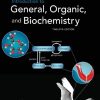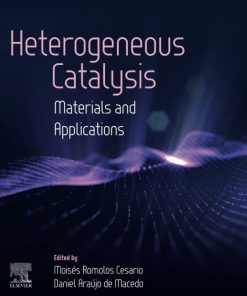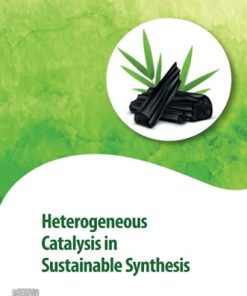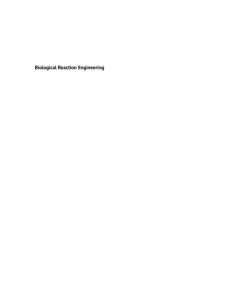Heterogeneous Catalysis Fundamentals Engineering and Characterizations 1st edition by Giovanni Palmisano, Samar Al Jitan, Corrado Garlisi 0323898459 978-0323898454
$50.00 Original price was: $50.00.$25.00Current price is: $25.00.
Heterogeneous Catalysis Fundamentals, Engineering and Characterizations 1st edition by Giovanni Palmisano, Samar Al Jitan, Corrado Garlisi – Ebook PDF Instant Download/DeliveryISBN: 0323898459, 978-0323898454
Full download Heterogeneous Catalysis Fundamentals, Engineering and Characterizations 1st edition after payment.
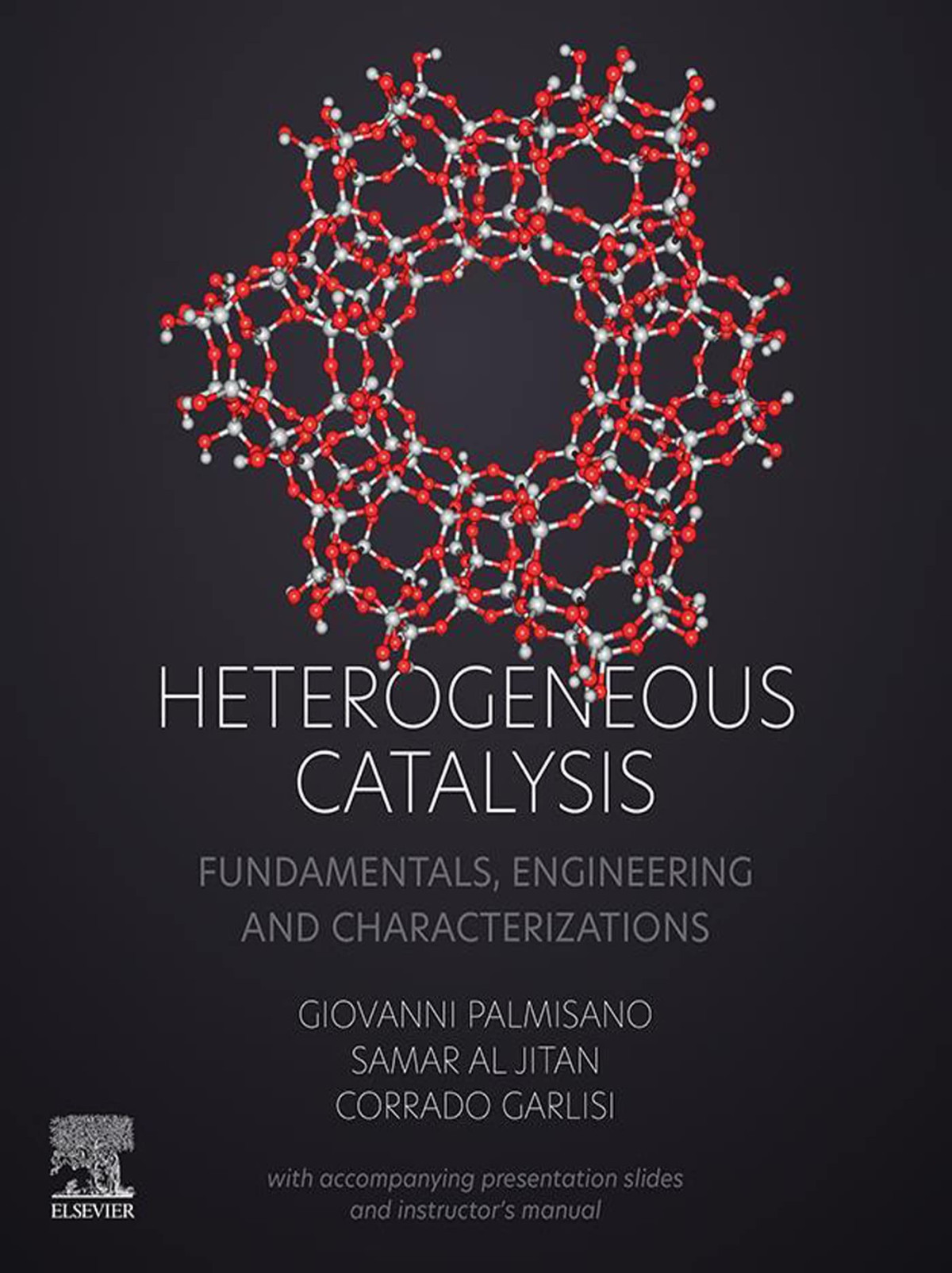
Product details:
ISBN-10 : 0323898459
ISBN-13 : 978-0323898454
Author: Giovanni Palmisano, Samar Al Jitan, Corrado Garlisi
Heterogeneous Catalysis: Fundamentals, Engineering and Characterizations provides a comprehensive introduction to the theory of heterogenous catalysis, including thermodynamic and kinetic aspects, adsorption mechanisms, catalytic reactors and catalyst characterization, with an introduction to sustainable catalysis. Representing a reference source for students and researchers working in this rapidly advancing field, the text reflects the many facets of the discipline, linking fundamental concepts with their applications. Beginning with a step-by-step look at the thermodynamics and energetics of catalysis, from basic concepts to the more complex aspects, the book goes on to cover reaction engineering and modeling, ending with sustainable catalysis and characterization techniques typically used for solid catalysts.
Including presentation slides to support research and learning as well as aid quick understanding of the key concepts, this book will be of interest to postgraduate students and researchers working in chemical engineering, chemistry and materials science as well as industrial researchers.
Heterogeneous Catalysis Fundamentals, Engineering and Characterizations 1st Table of contents:
Chapter 1. Introduction
1.1 Historical background
1.2 Fundamental concepts and quantities in catalysis
1.2.1 Fractional coverage
1.2.2 Catalytic activity
1.2.3 Conversion, yield and selectivity
1.3 Importance of heterogeneous catalysis in today’s industry
1.3.1 Ammonia synthesis
1.3.2 Sulfuric acid production
1.3.3 Catalytic cracking
1.3.4 Polymerization of alpha-olefins
Questions and Problems
Chapter 2. Fundamentals of the adsorption process
2.1 Physical and chemical adsorption
2.2 Thermodynamics and energetics of adsorption
2.2.1 Heat of adsorption
2.2.2 Binding energy of adsorbates
2.3 Kinetics of adsorption
2.3.1 Adsorption time
2.3.2 Adsorption rate
2.3.3 Potential energy diagrams
2.3.4 The Elovich equation in chemisorption kinetics
2.3.5 Desorption rate
Questions and Problems
Chapter 3. Adsorption models, surface reaction and catalyst architectures
3.1 Adsorption isotherms and their classification
3.1.1 Langmuir isotherm
3.1.2 Henry isotherm
3.1.3 Freundlich isotherm
3.1.4 Temkin isotherm
3.1.5 BET isotherm
3.1.6 Potential theory of Polanyi
3.1.7 Recent approaches to model adsorption isotherms
3.2 Adsorption isobars and isosteres
3.3 Models for surface reactions
3.4 Catalysts, cocatalysts and supports
3.4.1 Catalyst supports
3.4.2 Co-catalysts
Questions and Problems
Chapter 4. Surface area and porosity
4.1 Estimation of the surface area
4.1.1 Gravimetric and dynamic methods
4.1.2 Volumetric methods
4.2 Estimation of porosity and pore size
4.2.1 Dubinin-Radushkevich and the Dubinin-Astakhov methods
4.2.2 Horvath-Kawazoe method
4.2.3 Saito-Foley method
4.2.4 Barrett-Joyner-Halenda method
4.2.5 Dollimore-Heal method
4.2.6 Density functional theory
4.2.7 Mercury porosimetry
4.3 Hysteresis and capillary condensation
4.4 Pore models ‒ morphology
4.5 Mechanisms of diffusion within catalyst pores
Questions and Problems
Chapter 5. Catalytic reaction engineering
5.1 Catalytic reaction steps
5.1.1 External diffusion
5.1.2 Internal diffusion
5.1.3 Adsorption
5.1.4 Surface reaction
5.1.5 Desorption
5.2 Reaction mechanism and the rate-limiting step
5.3 Catalytic reactor design
5.4 Diffusion and reaction in heterogeneous catalysis
5.4.1 Mass transfer-limited and reaction rate-limited reactions
5.4.2 Diffusion with reaction in a catalyst pellet
5.4.3 Thiele modulus
5.4.4 internal and the overall effectiveness factors
5.4.5 Weisz-Prater and the Mears criteria
5.5 Multiple steady states and thermal hysteresis
5.6 Catalyst deactivation and regeneration
Questions and Problems
Chapter 6. Green heterogeneous catalysis
6.1 Conversion of biomass to biofuels
6.1.1 Biomass feedstock
6.1.2 Traditional thermochemical processes for catalytic conversion of biomass
6.1.3 Aqueous phase reforming for hydrogen and alkanes production
6.2. Electrocatalysis
6.2.1 Fundamentals of electrocatalytic processes
6.2.1.1 Types of electrochemical cells
6.2.1.2 Electrochemical kinetics
6.2.2 Water electrolysis
6.2.2.1 Hydrogen evolution reaction
6.2.2.2 Oxygen evolution reaction
6.2.3 Electrochemical CO2 reduction
6.3 Photocatalysis
6.3.1 Fundamentals of photocatalytic processes
6.3.2 Water and wastewater purification
6.3.3 Organic synthesis
Questions and Problems
Chapter 7. Characterization techniques
7.1 X-ray diffraction
7.2 X-ray photoelectron spectroscopy
7.3 X-ray absorption spectroscopy
7.4 Electron microscopy
7.5 Infrared and Raman spectroscopy
7.6 Temperature programmed methods
7.7 Electrochemical techniques
7.7.1 Voltammetry
7.7.2 Electrochemical impedance spectroscopy
7.8 UV-visible and photoluminescence spectroscopy
7.8.1 UV-visible spectroscopy
7.8.2 Photoluminescence spectroscopy
7.9 Solid-state nuclear magnetic resonance (NMR) and electron paramagnetic resonance (EPR) spectroscopies
7.9.1 NMR
7.9.2 EPR
7.10 Computational tools: density functional theory and molecular dynamic simulations
Questions and Problems
People also search for Heterogeneous Catalysis Fundamentals, Engineering and Characterizations 1st:
difference between homogeneous and heterogeneous catalysis
homogeneous and heterogeneous catalysis examples
which reaction is an example of heterogeneous catalysis
which one is an example of heterogeneous catalysis
mechanism of heterogeneous catalysis
Tags: Heterogeneous, Catalysis Fundamentals, Engineering, Characterizations, Giovanni Palmisano, Samar Al Jitan, Corrado Garlisi
You may also like…
Uncategorized
Chemistry - Organic Chemistry
Engineering - Engineering - General & Miscellaneous
Engineering Fundamentals: An Introduction to Engineering, 6th Edition Moaveni Saeed



